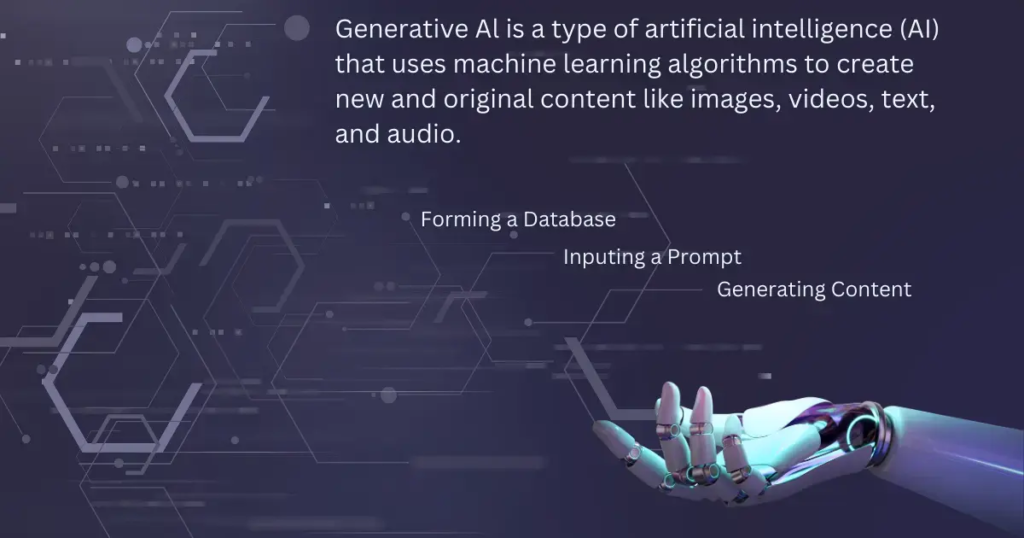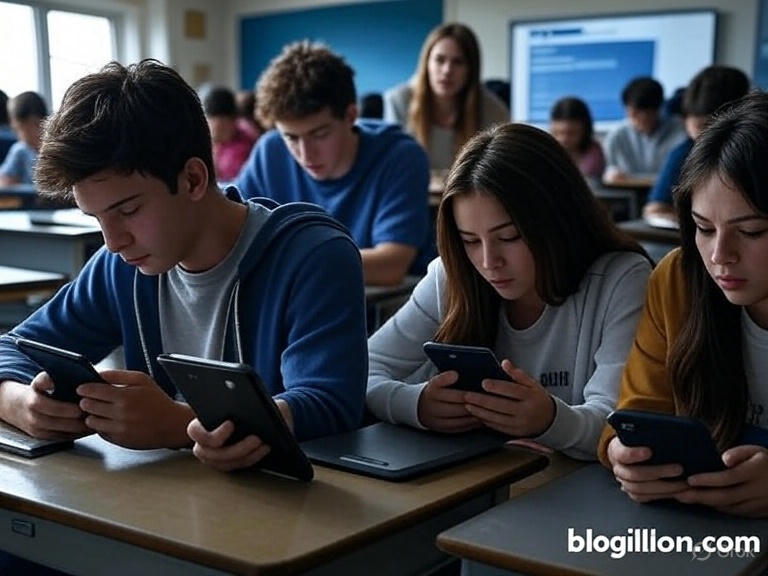AI Plagiarism Is Ruining Higher Education: Fix It Before Disaster!
AI plagiarism in higher education is becoming a silent epidemic that’s undermining the core of what universities stand for—genuine learning and intellectual growth. Picture this: A student, overwhelmed by deadlines, types a few prompts into ChatGPT and submits a polished essay as their own.
AI plagiarism in higher education threatens the value of degrees as students increasingly rely on AI tools.
A recent report on AI in education shows 65% of students feel they know more about AI than instructors, fueling misuse.
Surveys reveal 92% of university students now use AI for assignments, up from 66% last year.
This isn’t just cheating—it erodes trust and skills. As an educator, you face high stakes.
Let’s explore how to tackle AI plagiarism in higher education, turning challenges into opportunities for authentic teaching.
Act now—before it’s too late.
What Is AI Plagiarism?
Defining AI Plagiarism
At its core, AI plagiarism in higher education happens when students rely on AI to generate essays, reports, or even code, often with minimal input from themselves.
Unlike traditional plagiarism, which pulls from existing sources, AI crafts seemingly new material from vast datasets.

Source Image: Copychecker
But who truly owns that output?
The lines blur quickly.
This isn’t just about copying—it’s about presenting machine-generated work as your own, sidestepping the intellectual effort that defines academic growth.
Spotting the Signs
You might encounter this in subtle ways—a paper with flawless structure but no personal voice, or arguments that feel too generic.
As one expert puts it, it’s not just theft of ideas; it’s bypassing the learning process entirely.
Recognizing these signs early can make all the difference in maintaining integrity.
Look for unnatural phrasing or inconsistencies in style that don’t match a student’s usual work.
Why Understanding Matters
Understanding AI plagiarism starts with you spotting these patterns and educating others about them.
It’s not enough to rely on gut instinct; proactive awareness helps you address this before it undermines your classroom.
To dive deeper, check out this detailed exploration from the Online Journal of Distance Learning Administration.
By grasping the nuances, you empower yourself to foster authentic learning in an AI-driven world.
The Rising Prevalence of AI in Academia
Why is AI suddenly everywhere in classrooms, and how did it sneak up on us so fast?
The surge in AI adoption among students and faculty alike stems from its sheer convenience, but it’s also amplifying concerns about AI plagiarism in higher education at an alarming rate.

Image Source: Academia Insider
Consider the numbers: In the 2024-2025 academic year alone, AI usage among university students jumped to 92%, up from 66% the previous year.
That’s a growth reshaping how assignments are approached.
International surveys echo this, with 89% of higher education students turning to AI for homework help.
Deadlines, complex topics, and the pressure to excel drive this trend, making tools like ChatGPT feel like essential lifelines.
Yet, this rapid integration isn’t without fallout.
Cheating incidents involving AI have risen to about 5.1 cases per 1,000 students in recent surveys, signaling a shift that universities can’t ignore.
The pandemic accelerated online learning, normalizing digital aids, but now it’s time to adapt.
If you’re an educator, staying informed through resources like DemandSage’s AI statistics can help you track these changes and prepare accordingly.
Awareness isn’t just key—it’s your starting point for proactive measures.
Ethical Dilemmas Surrounding AI Use
The Core Question of AI’s Role
Is AI a brilliant assistant or a sneaky shortcut that’s testing our moral compass?
When it comes to ethical dilemmas in AI-generated content, higher education finds itself at a crossroads, where innovation clashes with principles of fairness and authenticity.

As you navigate this landscape, the challenge is balancing AI’s potential to enhance learning with the risks it poses to academic integrity.
This tension shapes how universities approach AI plagiarism in higher education.
Authorship and Academic Integrity
One major issue is authorship: If AI produces the bulk of a paper, who deserves the credit?
This blurs academic integrity, potentially leading to misrepresentation and eroding trust in scholarly work.
When students submit AI-generated content without acknowledgment, it undermines the value of their education.
You need clear guidelines to ensure credit is given where it’s due, preserving the authenticity of academic efforts.
Bias and Equity Concerns
Then there’s bias—AI trained on flawed data can perpetuate inequalities, disadvantaging certain student groups and raising questions about equity in grading.
For example, non-native English speakers might face unfair scrutiny from detection tools.
This isn’t just a technical glitch; it’s an ethical issue that demands your attention to ensure fairness across diverse classrooms.
Over-Reliance and Privacy Risks
Over-reliance adds another layer; students might skip critical thinking, stunting their development while faculty grapple with privacy concerns from detection tools.
These challenges demand thoughtful dialogue to balance benefits with risks.
If students lean too heavily on AI, they miss out on essential skills, and you face the burden of navigating murky ethical waters.
Moving Forward with Ethical Awareness
You can explore more in this Frontiers in Education article on ethical implications.
Addressing these dilemmas head-on ensures AI serves education without compromising its soul.
By fostering open discussions and staying informed, you can guide your institution toward a future where AI enhances, rather than undermines, learning.
Impacts on Students and Faculty
How does AI plagiarism in higher education ripple through daily campus life, affecting not just grades but relationships and futures?
The consequences touch everyone involved, from anxious students to overburdened professors, creating a web of challenges that demand attention.
For students, the temptation is real—51% view using AI like ChatGPT as cheating, yet 20% admit to doing it anyway, often under pressure for top marks.
This leads to skill gaps; they might ace assignments but struggle in real-world applications where original thinking matters.
Anxiety spikes too, with fears of detection undermining confidence.
Faculty feel the strain differently.
Detecting AI misuse consumes time, and tools can flag false positives, especially for non-native English speakers, fostering unfair accusations.
Trust erodes as suspicion grows, straining mentor-student bonds.
On a broader scale, institutions risk reputational damage if degrees seem devalued.
But imagine flipping this—by focusing on ethics, you can rebuild stronger connections.
Resources like CalMatters’ investigation into AI detectors offer real-world insights into these impacts.
Detection Tools: The Frontline Defense
Can Technology Outsmart Itself?
Wondering if technology can outsmart itself?
Detection tools are stepping up as the first line of defense against AI plagiarism in higher education. This is helping educators like you identify generated content with increasing accuracy, though they’re not without flaws.
These systems are designed to original what the human eye might miss, but they require careful integration to truly shine in academic settings.
As you explore these tools, you’ll see how they’re reshaping the fight for integrity.
How Detection Tools Work

Popular options like Turnitin, Copyleaks, and Originality.ai boast high detection rates—up to 99% in some studies
This happens by analyzing patterns in text that humans might miss.
These tools scan for unnatural phrasing, repetitive structures, or sudden vocabulary shifts, flagging potential issues for review.
They’re powerful allies, sifting through thousands of submissions to highlight AI-generated content, but their strength lies in how you use them.
Challenges and Ethical Concerns
But here’s where it gets tricky.
False positives occur, particularly with diverse writing styles, leading to ethical concerns about bias.
Non-native English speakers or students with unique voices might be unfairly flagged, creating tension.
You should pair them with manual checks to ensure fairness and avoid alienating students who are writing authentically but differently.
Investment and Institutional Adoption
Many universities, including those in California, invest millions annually in these systems, reflecting their growing necessity.
This scale of adoption shows how seriously institutions take AI plagiarism in higher education.
Combining tech with human judgment yields the best results, allowing you to maintain a balance between efficiency and empathy in your evaluations.
Getting Started with Detection Tools
For a hands-on look, try Scribbr’s AI Detector, which is free and user-friendly.
These tools empower you, but remember, they’re aids, not absolutes.
By integrating them thoughtfully into your workflow, you can catch potential issues early while fostering a culture of trust and transparency in your classroom.
AI Plagiarism Detection: An Overview
| Feature | How It Works | Key Considerations |
| Technology | These tools analyze text for unnatural phrasing, repetitive structures, or sudden vocabulary shifts to spot machine-generated content. | They are designed to catch patterns that the human eye might miss, helping educators sift through large numbers of submissions efficiently. |
| Popular Options | Tools like Turnitin, Copyleaks, and Originality.ai claim high detection rates, with some studies citing up to 99% accuracy. | Their effectiveness depends on proper integration and use within academic workflows. |
| Challenges | They can produce false positives, especially for non-native English speakers or students with unique writing styles. This raises ethical concerns about fairness and bias. | You must pair detection tool results with manual checks and human judgment to ensure accurate and equitable evaluations. |
| Institutional Adoption | Many universities, particularly in California, are investing millions in these systems annually. | This high-level investment shows institutions are taking AI plagiarism seriously, prioritizing both technology and policy. |
| Effectiveness | The best approach combines technology with human judgment. The tools act as powerful allies by flagging potential issues for review. | They should be used as aids, not as absolute proof. The goal is to maintain a balance between efficiency and empathy. |
| Getting Started | For a hands-on look, you can try free, user-friendly options like Scribbr’s AI Detector. | These tools empower you to catch potential issues early and foster a culture of transparency in your classroom. |
Crafting Effective AI Policies
The Power of Policy
What if a clear policy could transform confusion into clarity?
Crafting effective guidelines is essential to combat AI plagiarism in higher education.
These policies provide a framework for responsible integration and safeguard academic integrity.
Emphasize Transparency
Start with transparency.
Policies should define permissible uses, like brainstorming, and require citations for any AI-generated input.
Top universities, such as those ranked by Times Higher Education, often ban undisclosed AI in core assessments. This helps maintain fairness.
Build a Community-Driven Approach
Involve your community—faculty, students, and admins—in the process for buy-in and relevance. Update them regularly, as AI evolves swiftly.
Prioritize Equity
Equity matters too. Ensure access to tools for all to avoid widening gaps.
A well-crafted policy isn’t punitive; it’s educational.
Learn from Leading Examples
Look to examples from Duke University’s AI guidelines for inspiration on balancing innovation and ethics.
With the right approach, policies become your ally in this ongoing battle.
Strategies for Fostering Authentic Learning
How can you design experiences that make AI temptations irrelevant?
Fostering authentic learning is the proactive antidote to AI plagiarism in higher education, shifting focus from outputs to meaningful processes that build real skills and engagement.
Redesign assessments with personalization in mind—think reflective essays tied to personal experiences or in-class collaborations where AI can’t fully substitute human insight.
Scaffold assignments: Break them into stages with feedback loops, encouraging iteration over one-shot generation.
Teach responsible AI use early through workshops, emphasizing it as a tool for enhancement, not replacement.
Promote peer reviews and oral presentations to highlight individual contributions.
Authentic tasks connect learning to real life, making cheating less appealing.
Strategies from Packback’s blog on academic integrity show how emphasizing original thinking reduces reliance on detectors.
By prioritizing depth, you cultivate a culture where authenticity thrives.
FAQ
What exactly counts as AI plagiarism?
It boils down to submitting AI-generated content without disclosure or as your original effort. Always cite if you use it for ideas or drafting.
How can I detect AI-generated content in student submissions?
Watch for consistent tone lacking personality, or use tools like Copyleaks for scans—but follow up with conversations to confirm.
Are there free AI detection tools available for educators?
Yes, options like GPTZero and Scribbr’s detector offer solid starting points without cost, ideal for quick checks.
What should university policies include regarding AI use?
Key elements: Clear definitions of allowed uses, citation requirements, and consequences, plus training on ethical applications.
How does AI plagiarism affect student learning outcomes?
It shortcuts essential skills like analysis and creativity, potentially leaving graduates unprepared for professional challenges.
Can AI be used ethically in higher education?
Definitely—when transparent, like for editing or research aids, it enhances learning without compromising integrity.
What are the risks of ignoring AI plagiarism?
From devalued credentials to lost trust, the fallout can damage reputations and hinder true educational progress.
Where can I find more resources on AI ethics in academia?
Reputable sites like EDUCAUSE or UNESCO provide in-depth guides and studies to deepen your understanding.
Related Posts
Can You Trust AI? The Ethics & Explainability of AI Content
Wondering if AI content is reliable? Explore the ethical challenges and explainability issues that affect trust in AI-generated text. As an educator or creator, you need to understand these concerns to use AI responsibly and maintain integrity.
Ethics and Limits of AI Text Generators: What You Need to Know
Curious about the boundaries of AI text generators? Learn how ethical dilemmas and technical limits shape their output in higher education. This guide helps you navigate risks like bias and plagiarism, ensuring you stay informed and cautious.
Ethical AI Practices Made Easy: 7 Simple Steps for Success/
Ready to implement ethical AI use? Discover seven practical steps to integrate AI responsibly into your teaching or work. These actionable tips empower you to enhance learning while avoiding pitfalls like AI plagiarism in higher education.
Can You Trust AI? The Ethics & Explainability of AI Content
Are you confident in the AI content you encounter daily? Dive into the ethical challenges and explainability issues that question its reliability in education. As an educator or student, understanding these factors is crucial to ensure AI supports learning without compromising trust or integrity.
Conclusion
AI plagiarism in higher education isn’t a problem we can wish away—it’s one that calls for collective action and smart adaptation right now.
You’ve journeyed through the definitions, rises, ethics, impacts, tools, policies, and strategies that can help reclaim authenticity.
As an educator or leader, embrace these insights to guide your institution forward, turning potential pitfalls into pathways for richer learning. Stay curious, communicate openly, and remember: The heart of education is human connection.
Act today, and shape a brighter tomorrow for your students.

